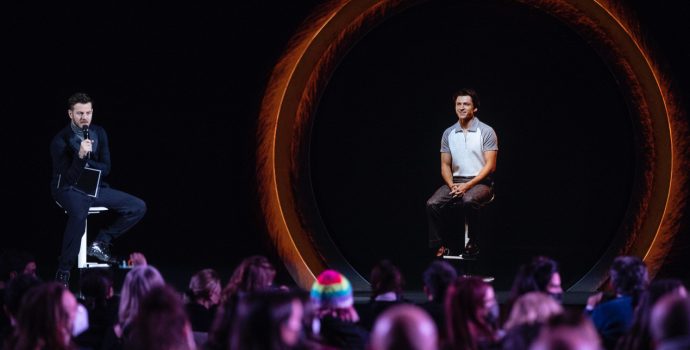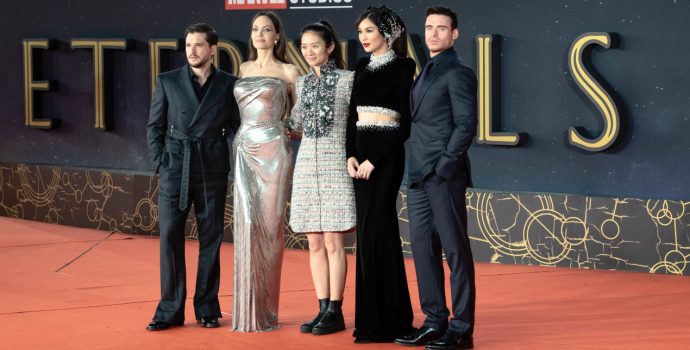The american-italian filmmaker explains the origin of the film, working with his friends and his first collaboration with Netflix
Martin Scorsese’s recent statement about Marvel films, which he defined «theme parks invading theaters», has been highly criticized by many, although some of his famous colleagues (including Francis Coppola) backed him up defending his words. While the feud goes on, with many Hollywood stars (from Samuel L. Jackson to Colin Hanks) participating in the discussion, the Oscar winner director presented his new work, The Irishman, at Rome Film Festival.
The three-hour-and-a-half long film, which premiered at New York Film Festival, received critical acclaim. The Irishman stars three Hollywood giants, Robert De Niro, Al Pacino and Joe Pesci: in the epic crime film, the three actors look 20-30 years old younger thanks to CGI technology.
The film marks Scorsese’s first collaboration with Netflix and it’s based on a work of narrative non-fiction, I Heard You Paint Houses: Frank “The Irishman” Sheeran and Closing the Case on Jimmy Hoffa, by investigator, defense attorney and former homicide prosecutor Charles Brandt: the book reports the life of Frank Sheeran, an alleged Mafia member who worked for the Bufalino crime family.
The Irishman hits theaters on November 4, and will be streaming on Netflix from November 27, 2019. Martin Scorsese met the press on Monday morning, October 21, to talk the film.

In The Irishman you explore one of your favorite cinema territories, but there’s a different perspective on Mafia: there are no “charming gangsters”. How did you come up with this new point of view?
«Robert De Niro and I wanted to work together again, the last film we made was ‘Casino’, in 1995, and over the years we tried to find the right subject matter and the character to work together. While we were planning something, he read this book, which is called ‘I Heard You Paint Houses’, and he wanted me to have a look at it: as he was describing me Frank Sheeran he became very emotional and I sensed from his reaction to the character that there was something special about him. The Irishman is not only a film about a mobster or about “who shot who”: it’s a film about time, mortality, love, betrayal and remorse.»
There are melancholic and religious aspects in this film.
«Of course, because these aspects have to do with the human condition, whether one believes in religion or not. There’s a contemplation of the abstract, the spirit, if you want to use that word. The melancholy is there, but I think it’s a comfortable melancholy: that’s the acceptance of the end of life.»
How did you work with Robert De Niro and Al Pacino?
«Working with Bob De Niro again after 23 years? Well, we didn’t have to say very much at this point, having gone from the book to the script: once I saw how screenwriter Steven Zaillian made the structure and Bob reacted to it, I knew how to make the film. I never worked with Al Pacino before, but Francis Coppola introduced me to him in the 1970s: we had a project about 40 years ago that finally he didn’t come off. So much of what you see comes from the actual relationship between Robert De Niro and Al Pacino: they respect and love each other as professionals, as people and they had their own relationship over the years. We always wanted to work together, but we couldn’t, so we tried to do something special.»
You made the main characters look 20-30 years younger in the film: can you tell us something about the use of the CGI in this film?
«It was a very complex and mystical process, it was an experiment for us and we did some tests. Let’s say that I didn’t want to cast younger actors to play the main roles: I really wanted to do this film with Robert, Al and Joe. Also, as each week went by, the technology got better. Each week! So the things we started doing in the beginning we re-did later on.»
As a filmmaker you‘ve always upheld the importance of theaters, why did you open the door to Netflix?
«Do you want to see the film in a theater? You need to see the film whether the film is in a theater, whether you see it in stream on TV, iPad, on your phone. In order to see these things, they have to be made and in the last 10 years my films have been financed under difficult circumstances. In this case, Netflix stepped out financing the film completely and with total creative freedom. The trade off was that it gets streamed, but it’s still showing in theaters. We have to stop thinking in a rigid way; what’s new now is that the possibility of cinema is endless in terms of how films will be seen or what films will be called films: some might be holograms, some might be virtual reality, we don’t know. Of course, the best thing is to see the film in a theater, but first you have to get the film made. A number of times, in my career, some of my pictures played only two weeks in a theater and that’s all. I hope theaters continue to support cinema of this kind, actually at Netflix they do. Right now, theaters seem to be mainly support “theme parks”, the comic-book films. That’s fine, but it shouldn’t become what our young people believe is cinema.»









